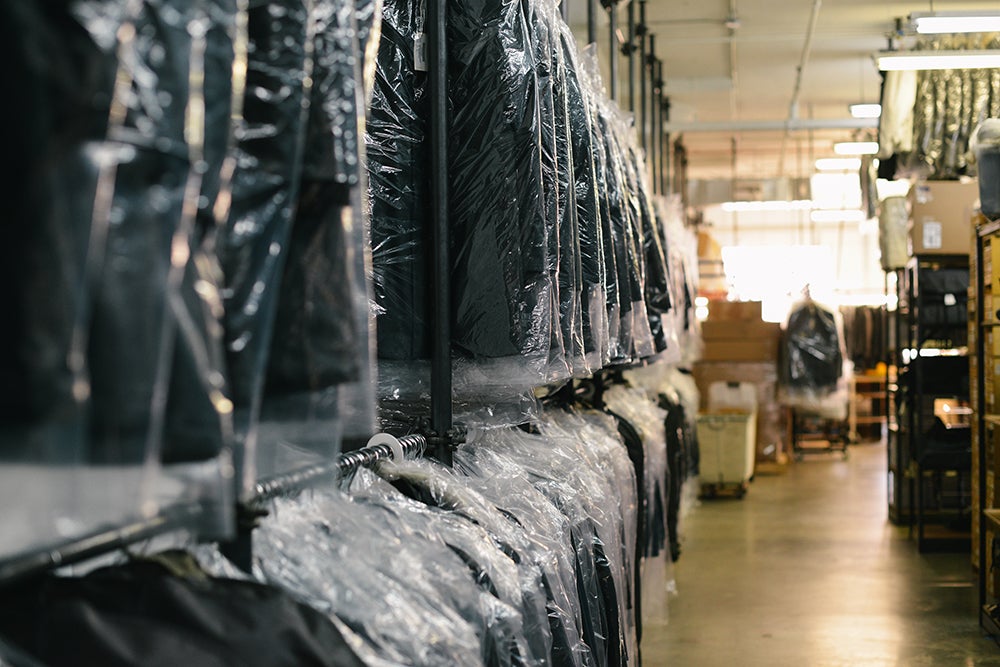Photo by: Pixabay user skeeze.
Chemicals in the workplace can have a direct impact on your health—and even the health of your family.
The Background: For some people, working with dangerous chemicals and heavy metals is just part of the job. The right safety gear and procedures can keep workers healthy, but in the case of newer, more recently-created chemicals, the health risks are often unclear.
Clothing Conundrum: Dry cleaning is one common field that relies on toxic solvents. The industry is moving away from an older, carcinogenic chemical called percholroethylene (PERC), and adopting new solvents called butylal and high-flashpoint hydrocarbons. The health impact of those substances isn’t yet clear, but their byproducts can include butanol, a known irritant, and formaldehyde, a possible carcinogen. Harvard Chan School researchers are looking into the effects of the chemicals on workers.
Heavy Metal: Lead and other heavy metals can pop up in a wide variety of workplaces. One Harvard Chan School study found lead on surfaces throughout a battery recycling facility, a firing range and gun store, and an electronic scrap recycling facility. The lead appeared on non-production surfaces, meaning that employees could come into contact with it even when not directly handling the metal. That could lead to higher levels of exposure for workers, and possibly family members if they return home without washing or changing from contaminated clothes.
Bringing Home Trouble: Chemicals and dust from heavy metals in the workplace can be invisible to the naked eye, and have no smell. They can attach to clothing, skin, hair, and personal belongings. That dust can get into the home if workers return without washing, or wear the same clothes and shoes home that they wear at work. Even contaminated items such as protective gloves or a travel coffee mug can carry the dust home, where it can transfer to workers’ cars, furniture, and floors, and expose family members. Children are at particular risk since they play on floors, and are more likely to put hands and other objects in their mouths.
“Take home” can happen with many different chemicals: metals like lead and mercury, pesticides, flame retardants, polychlorinated biphenyls, and polyaromatic hydrocarbons, to name a few.
Resources:
- Occupational Exposures to New Dry Cleaning Solvents
- Are “Green” Dry Cleaning Solvents Bad for Our Health?
- Health and Safety in the Dry Cleaning Industry
- Lessons Learned from Surface Wipe Sampling for Lead in Three Workplaces
- Are You Bringing Toxic Chemicals Home from Work?

Firefighters' gear may contain toxic chemicals
These "forever chemicals" don't degrade easily and are linked to cancer, low birth weights, diabetes, reduced fertility, and immune system suppression.

Occupational Exposures to New Dry Cleaning Solvents
This study explores the impact of common dry cleaning solvents on workers' health.

Lessons Learned from Surface Wipe Sampling for Lead in Three Workplaces
Insights to protect workers and their families from exposure to lead.

Health and Safety in the Dry Cleaning Industry
n her interview with the Harvard Chan This Week In Health podcast, Diana Ceballos, Research Scientist at Harvard T.H. Chan School of Public Health, explores why the dry cleaning industry faces hurdles as it tries to switch to less toxic cleaning solvents, plus what the U.S. can learn from Europe when it comes to chemical…
Groundwater contamination near Georgia air bases worries experts, residents
Groundwater near three air bases in Georgia is contaminated with toxic chemicals that are linked with cancer and other health problems, according to recent tests by the Air Force—and experts and nearby residents are worried about drinking water contamination. The chemicals in the groundwater, known as per- and polyfluoroalkyl substances (PFASs), are found in a…
Less mercury in the environment since tougher emissions rules enacted
Mercury has declined significantly in the air, water, and soil, and in U.S. freshwater and Atlantic Ocean fisheries. Weakening emissions rules could impede progress.
Evaluating e-waste workers’ exposure to flame retardants
A common method used to evaluate skin exposure to hazardous chemicals among workers at electronics recycling plants is to wipe workers’ hands with hand wipes and measure the amount of chemicals on them. A new study found that it took multiple wipes to remove much of the flame retardant residue from workers’ hands at one…
